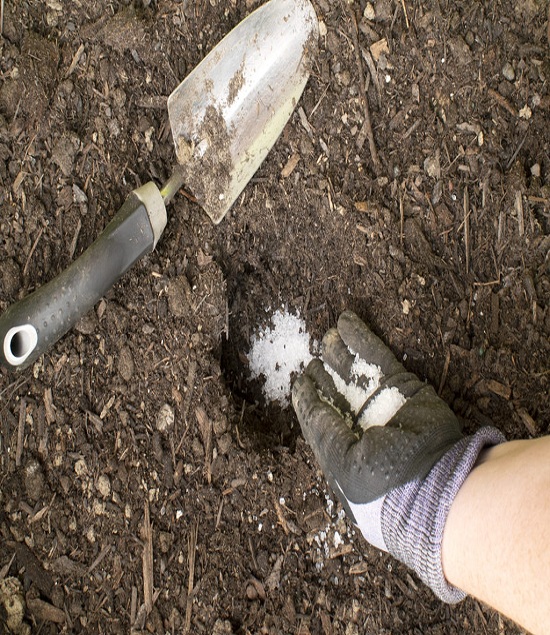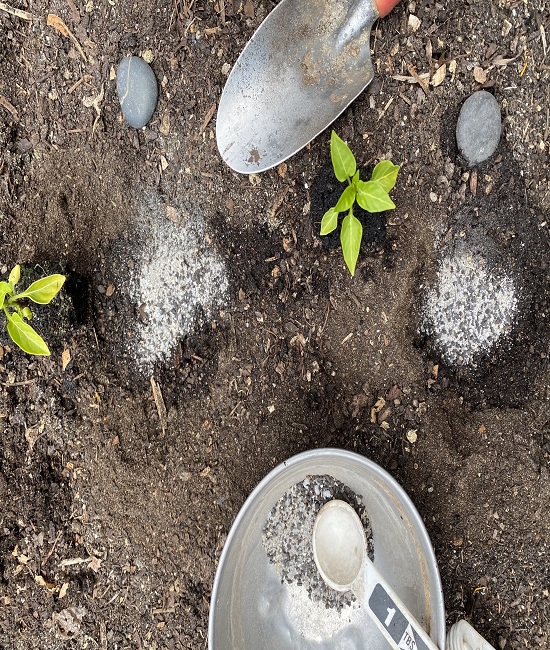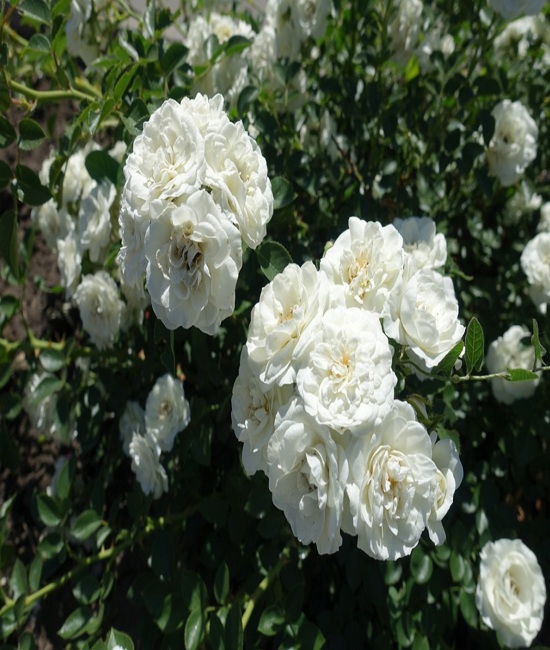The mineral hydrated magnesium sulfate was first discovered in the well waters of Epsom, England, and is now commonly known as Epsom salt.
Epsom salt is often used as a saline laxative and pain reliever, but it has many other uses as a home cure.
Many people are unaware that Epsom salt may also be used in organic gardening to promote the growth of robust plants.
In this post, we’ll go over 10 of the most effective ways to use Epsom salt in your garden or on your plants right away.
Boost Seed Germination
If you add Epsom salt to the soil before planting seeds, your garden will have a head start.
Growing healthier and more robust seedlings is facilitated by magnesium’s role in promoting cell wall synthesis.
Epsom salt should be worked into the soil at a rate of 1 cup for every 100 square feet before planting seeds, or 1–2 tablespoons for every hole.

Make it easier to absorb nutrients
Commercial fertilizers often include magnesium to aid in nutrient uptake by plant roots (nitrogen, phosphorus, sulfur.)
By improving soil absorption organically, Epsom salt removes the requirement for processed chemical fertilizers for gardeners who are only utilizing organic ingredients.

Protect against Transplant Shock
Moving plants and seedlings from a small pot to a larger one, from an indoor environment to the outdoors, or from a greenhouse to the ground is a stressful experience for any gardener.
Once transplants are in their new surroundings, try giving them Epsom salt to assist wounded roots overcome transplant shock.
It’s important to cover the salt you sprinkle in the holes with dirt so the plant’s roots don’t absorb too much of the salt’s saltiness too quickly.

Improve Foliage
Leaves will become yellow on plants that are magnesium deficient.
This is because magnesium is required for chlorophyll synthesis. To promote healthy plant growth, try applying Epsom salt as a soil amendment.
The plants in your vegetable garden, as well as any trees, shrubs, flowers, or grasses you want to green up, will benefit from receiving around 1 tablespoon per 12 inches of height once a month.

Prevent Leaf Curling
Plant magnesium shortage is another possible reason for leaf curling.
Once again, amend the soil surrounding the sick plant’s base with Epsom salt.
Another option is to mix 2 teaspoons of Epsom salt with a gallon of water and spray it on the leaves to speed up the absorption process.

Prevent Pests from Invading Your Garden
Epsom salt can be used to discourage pests, but it won’t kill them the way table salt (sodium chloride) can.
As with diatomaceous earth, the sharp crystals of hydrated magnesium sulfate can scrape and irritate the skin of pests if they are sprinkled around plants.
(Epsom salt is very soluble in water and will be washed away by even a little rain.)

Tastier Tomatoes
Among the usual garden inhabitants, tomato vines have a heavier-than-average fruit to plant size ratio, increasing the risk of magnesium insufficiency.
Epsom salt should be given to tomatoes twice as often as it is given to other plants.
Since blossom end rot is caused by a lack of calcium in the tomato vine, most tomato fertilizers contain calcium, which competes with magnesium for root absorption.
This means that foliar feeding is the most effective way to provide magnesium to these plants.
Every two weeks, irrigate tomato vines with dissolved Epsom salt (2 teaspoons per gallon of water).

More Abundant Peppers
Peppers, like tomatoes, are a common vegetable garden plant that produces a disproportionately large number of edible fruit for its size.
To increase fruit size and productivity, magnesium fertilizer should be applied every two weeks.
Over-watering hot peppers can result in milder fruit, therefore amending the soil instead may be the better option.
Around the drip line of your pepper plants, sprinkle 1 tablespoon of Epsom salt per foot of height once a week.

Sweeter Fruit
Making fruit is the most energy-intensive part of a plant’s life cycle.
In order to increase chlorophyll levels within the plant cells, apply Epsom salt to fruit and nut trees, shrubs, and vines in the same ways and amounts described above.
Increased energy implies more sugar, which allows the plant to produce more sweeter, healthier fruit.
Stunning, Bountiful Roses
Do you ever wonder why the rose bushes in your neighbors’ yards always seem to be more lush and blooming than your own?
Epsom salt is probably the correct answer.
Many experienced rose growers agree that magnesium promotes the growth of strong, healthy new canes from the plant’s root system, which in turn results in more and larger flowers.
Epsom salt, being a chlorophyll booster, naturally causes the leaves to become darker.
For best results, feed your roses with Epsom salt not just when you first plant them, but also when you see new growth and again while the flowers are in full bloom.
Before planting, bare-root roses can also be bathed in water with dissolved Epsom salt.
It is nearly impossible to overuse Epsom salt in the garden. Magnesium sulfate is harmless to soil since it has no effect on the pH balance.
Water, magnesium, and sulfur are all produced when the crystals are broken down, all of which are beneficial to plant growth.
Using Epsom salt in your garden is risk-free, takes very little effort, and has immediate effects on the overall health of your plants.


